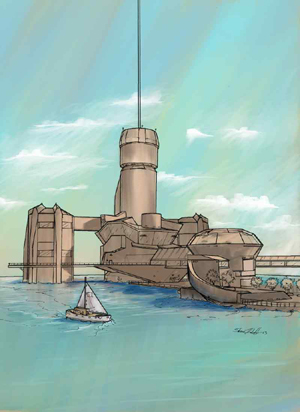Starting this week I will dedicate Friday’s post to a recap of the week’s news that grabbed my attention.
Here are the news bits and press releases that caught my eye this week.
Stealth Inkjet Printer Startup Could Rock Industry – March 22, 2007
"…a nanotech-fueled, consumer inkjet printer that can print sixty pages a second for under $200 has successfully demonstrated the technology. … Company executives have said they feel that they can ship an 8x10 color inkjet by the end of 2008 that will cost less than $200 and print 60 pages a minute."
"The Memjet technology uses a series of individual MEMS-based inkjet nozzles, fabricated using conventional semiconductor manufacturing techniques. Each chip measures 20 millimeters across and contains 6,400 nozzles, with five color channels, the company said. A separate driver chip calculates 900 million picoliter-sized drops per second. For a standard A4 letter printer, the result is a total of 70,400 nozzles."
RR: Two points here: 1) this technology, should it pan out, represents a huge leap in printer capabilities while at the same time a huge decrease in price performance, and 2) it also demonstrates Ray Kurzweil’s now famous Law of Accelerating Returns, which states: "An analysis of the history of technology shows that technological change is exponential, contrary to the common-sense "intuitive linear" view. So we won't experience 100 years of progress in the 21st century -- it will be more like 20,000 years of progress (at today's rate). The "returns," such as chip speed and cost-effectiveness, also increase exponentially. There's even exponential growth in the rate of exponential growth."
Nanotechnology companies team up – March 22, 2007
"The Houston nanotechnology company founded by Rice University Nobel laureate Richard Smalley and a California firm that plans to use nanotubes to build better electronics are merging, the companies will announce today.
The move will unite the world's leading producer of carbon nanotubes, Carbon Nanotechnologies, and Unidym, a company that can use them to make better television, phone and computer screens and other electronics."
RR: Is this the model that will finally put nanotubes on the consumer products map? Perhaps, but considering the number of nanotube manufactures and the fact that not one of them has lived up to the hype regarding price, functionalization and separation, perhaps not. Stay tuned.
Speaking of hype, one final quote from the article "We're at the brink of the really high-value applications" said CNI chief Bob Gower, who likened the world-changing potential of nanotubes to the Internet. "This is truly disruptive technology."
Researcher’s Light Body Armor May Save Soldiers’ Lives – March 22, 2007
"…a composite manufacturing process to create lightweight body armor using nanotubes that protects a soldier's legs, arms and head. Metal traditionally has been used for such protective gear, but lightweight composites materials such as the ones produced by Okoli now can be used in place of heavier metals, he said."
RR: New technologies have always (and seemingly will always) represent a double-edged sword, which can be used in peaceful as well as military applications. In this case, let’s consider the fact that the use of nanotubes will be for saving lives in a time of war, and by extension, in times of peace when used by police forces and civilians.
They did get one thing wrong in the article: "Nanotubes are derived from buckminsterfullerene…" Actually, nanotubes are distinctly different from buckyballs, and are "derived" from sources other than C60 (1) (you don’t use C60 to make nanotubes, although they are both composed of carbon atoms). Nanotubes represent another way that carbon atoms can be arranged; in this case in a tube rather than a sphere. In "science guy" talk, nanotubes are allotropes of carbon (2), and members of the fullerene family, as are buckyballs.
To read the complete articles, see:
http://www.nanotech-now.com/news.cgi?story_id=21388
http://www.nanotech-now.com/news.cgi?story_id=21364
http://www.nanotech-now.com/news.cgi?story_id=21400
(1) http://en.wikipedia.org/wiki/Carbon_nanotube#Synthesis
(2) http://en.wikipedia.org/wiki/Allotropes_of_carbon










